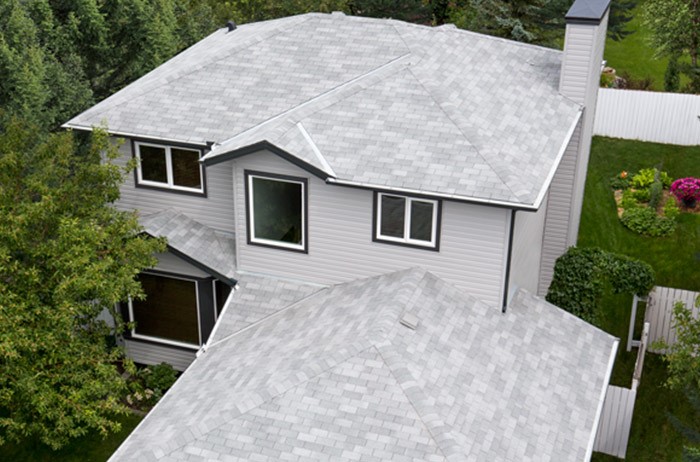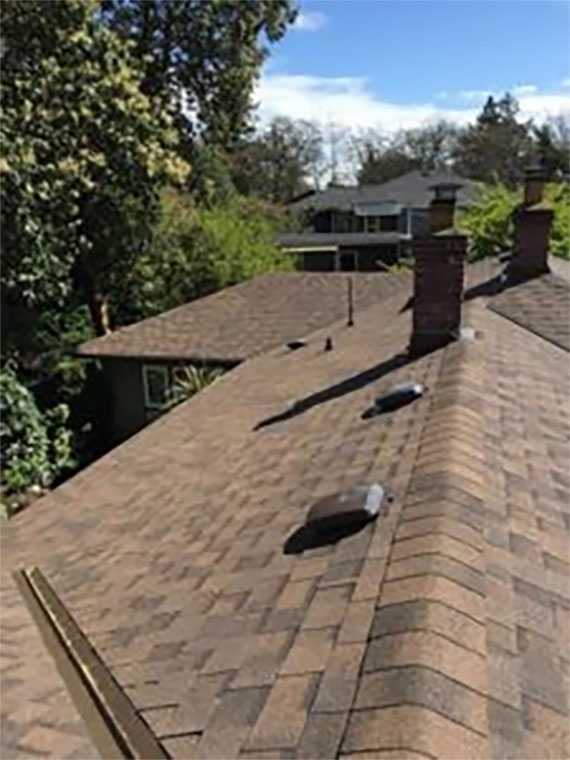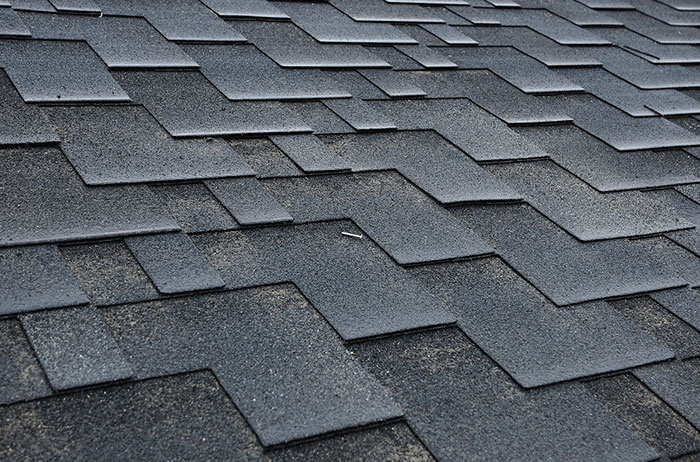Fibreglass VS. Asphalt Shingles
Whether a roof is shingled in fiberglass or asphalt shingles, it will be subject to wear and tear over time in the climate of Vancouver Island. There will come the point when a homeowner has to replace the roof on their home. When that day dawns, the homeowner will likely face the choice having the roof redone with fiberglass or asphalt shingles.
It may seem trivial, but it should be given some thought, and when one is aware of the pros and cons of both they can make an educated decision. Both types of shingles have their strengths and weaknesses, just like any product, so here are some facts so a homeowner can decide what the best option for their home.
Note: There is often some confusion around organic shingles made environmentally friendly, or the shingle is made with organic materials. The title is simply a marketing strategy, and organic shingles are simply non-synthetic.

Asphalt Shingles
The asphalt shingle is known best for its durability as well as being an affordable option when compared with other shingle options. A few types of asphalt shingles can last up to fifteen or twenty years.
These shingles are, in a nutshell, comprised of felt paper soaked in asphalt. The asphalt enriched paper is then coated with an additional layer thick layer of asphalt, then a layer of ceramic granules. Due to this process, the shingle becomes waterproofed and is then able to withstand the sometimes harsh climate of Vancouver Island and elements of weather.

The coating created helps to protect the shingle from the sun’s relentless UV rays, and they also become resistant to the growth of algae since leachable paint is added. The granules form a victoria rooferssurface that prevents algae growth and discoloration. Although asphalt shingles have all of these pros, their paper content make them more susceptible to fire damage than the fiberglass option.
Fiberglass Shingles
Fiberglass shingles do contain a bit of asphalt, asphalt is a durable material, and this shingle features a mat that is made of wet fiberglass bonded together with a urea-formaldehyde resin. The mat is soaked with asphalt filled with mineral fillers, which makes it waterproof.
Since this product is absent from paper, fiberglass shingles are more fire resistant than organic asphalt shingles. Fiberglass shingles are not the most ideal for cold climates. The low temperatures can cause fiberglass shingles to brittle, which in turn makes them susceptible to breaking.
Fiberglass shingles tend to be the better choice for hot climates due to its flame retardant
capabilities and high-heat resistance. On the other hand, shingles made of fiberglass are rich in alkaline substances which can attract algae, making fiberglass proofs prone to having a dirty appearance.
Asphalt shingles are one of the more affordable shingle options. It is good to know the appearance of both of these options is similar. Both have asphalt in them and granules. Moreover, they are installed the same way. The difference between the two lies within the layer of glass fiber that makes fiberglass shingle absorb less moisture and more resistant to heat.
Still unsure what option you should go with for your roof? Give Shoreline a call today, and we will help you decide what is right for your roof.


